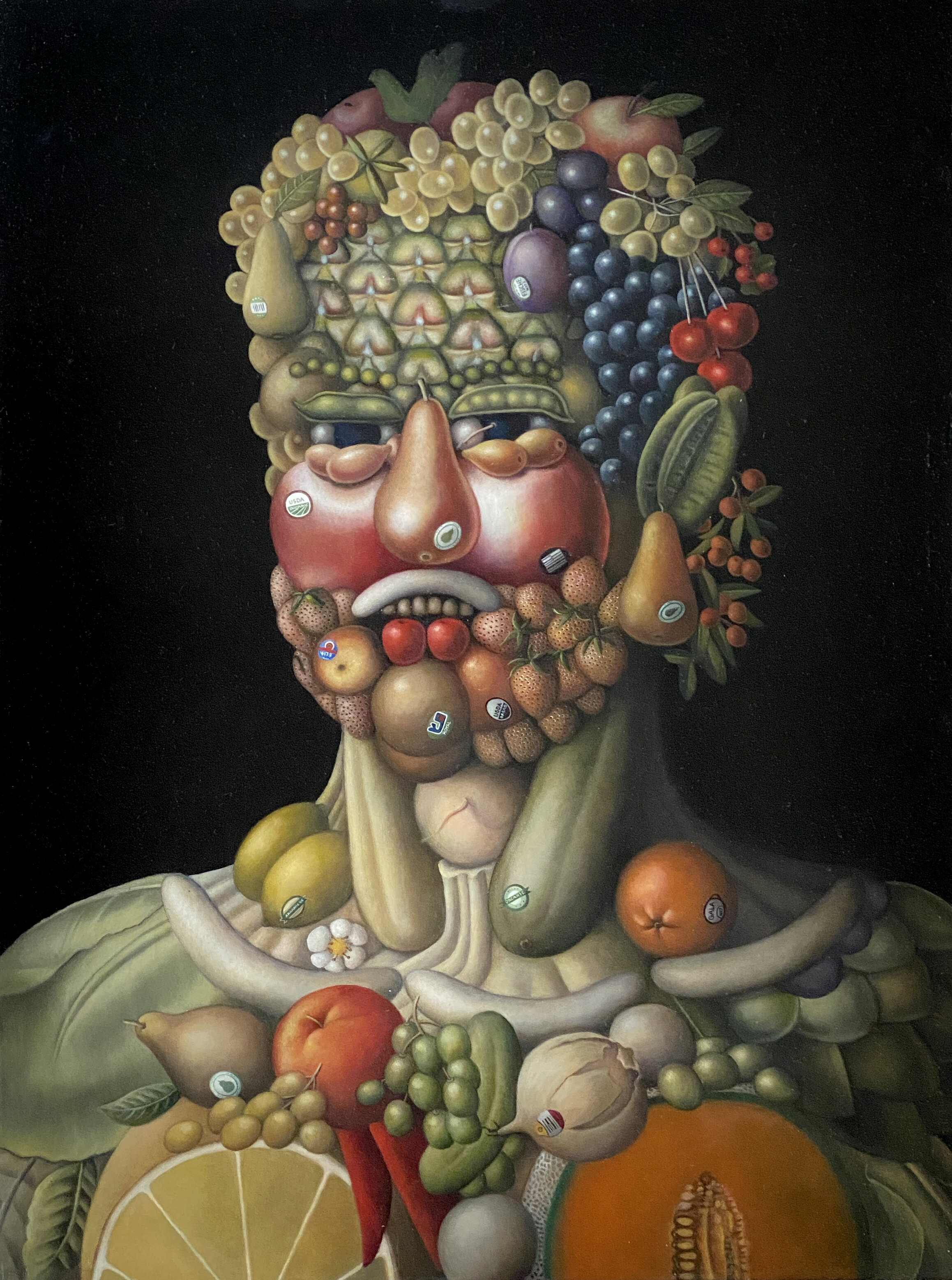Amy Hill and Eileen Sackman at SPRING/BREAK ART SHOW 2021 Booth #1046
THE BANQUET, curated by Kathleen Vance and Daniel Aycock
Concept:
We will present our booth as a banquet room/celebration resplendent with Amy Hill’s oil paintings based on the 15th century painter (SHOULD WE GIVE THE DATE...NOT TECHNICALLY MEDIEVAL, BUT STYLISTICALLY…); Giuseppe Arcimboldo, who created strange heads made of fruits, vegetables, flowers, books, anything but skin and bone. The banquet table will be set with ceramics by Eileen Sackman that merge medieval and Early Renaissance works and the technique of sgraffito. The forms used for this series are based on medieval design while the imagery is created in homage to Hieronymus Bosch and other painters from that time period.
At first entry the booth might seem straightforward but upon closer inspection, may be conceived as irreverent, iconoclastic, and in the late Middle Ages, certainly sacreligious. Archimbaldo’s portraits at the time must have been quite shocking, and Amy Hill’s homages to them push the boundaries even further constructing the heads out of pills, bling, junk food etc. Eileen Sackman’s vessels and plates on first glance seem quite utilitarian, but look a little closer and the imagery from Bruegel and Bosch is quite shocking.
Amy Hill
In this series Amy Hill updates Giuseppe Arcimboldo’s paintings using contemporary elements such as the inner wires and plates of computers, pills, cigarettes and other addictive drugs and processed food items of our day. Her portraits comprised of technological components resemble faces, but are neither people nor machine, portending the power of the machine and our eventual surrender to it. Between the gadgets Hill leaves dark, negative spaces, and “Gadget Head” wears a sinister smile. Other heads are composed of elements with which we carry out love/hate relationships such as bling and junk food. Hill means for their components to be beautiful but also empty and menacing. The resulting deformity reflects a lack of compatibility between the face and the foreign elements, a failed attempt at hybridity. These elements that we choose to ingest or make use of aren’t necessarily good for us. They work to keep us alive and at the same time to destroy us. As we embrace them, we become heretical against ourselves. The producers of these elements, often large corporations, are aware of this self-destructive quality and feed off of this symbiosis, often at great profit.
The 15th century painter Giuseppe Arcimboldo created strange heads made of fruits, vegetables, flowers, books. They are anti-portraits. The Habsburg emperor Rudolph II whose court was full of intellectuals who promoted the avant-garde, commissioned him to paint his portrait and luckily had a sense of humor, as the resulting image had him looking less like a man and more like a fruit basket. Not only did he aim to amuse, but through his portraits Arcimboldo used his portraits to express criticism of the society he lived in. His heads made of flora and fauna embrace a pantheistic view in which an ancient god created the world using earth, fire, water and air, in direct opposition to reigning Christian beliefs. His painting, The Librarian, depicts a man made of books, taking issue with wealthy people who owned books but did not read them.
Eileen Sackman
Eileen Sackman’s pieces can similarly be perceived through an initial impression of fine line work in the sgraffito method, and complex imagery- when upon further inspection reveals the hellscapes, with selected references to some of the more graphic imagery from Bosch and Bruegel.
Sackman uses the Sgraffito method to create the images on the pottery. Sgraffito evolved in the tenth century from slipped glazed wares with color splashes, but its origin is still debated among scholars. Derived from an Italian term that means "scratched," sgraffito refers to the technique used to design the decorations. Sgraffito (in Italian "to scratch") is produced by applying layers of color or colors (underglazes or colored slips) to leather hard pottery and then scratching off parts of the layer(s) to create contrasting images, patterns and texture and reveal the clay color underneath.
Sackman’s sgriffito works seem to be artifacts from the middle ages. In form and function, they are quite similar to the ceramics in use 1,600 years ago, and almost feel like they would be comfortable in a glass vitrine in the Met Museum. But the jarring, and yet familiar linear drawings breaks the bubble. And like any good visit to the historical museum, one must get closer, investigate and drink up the imagery.

